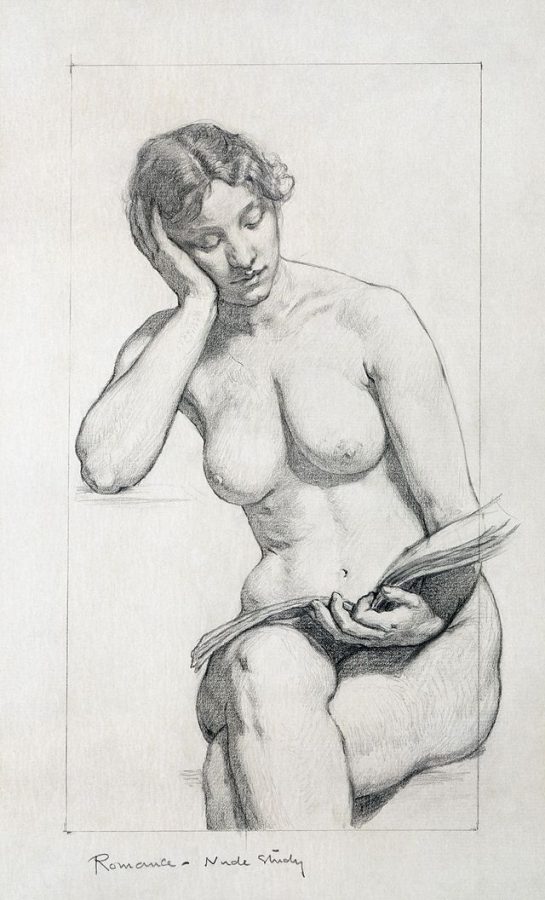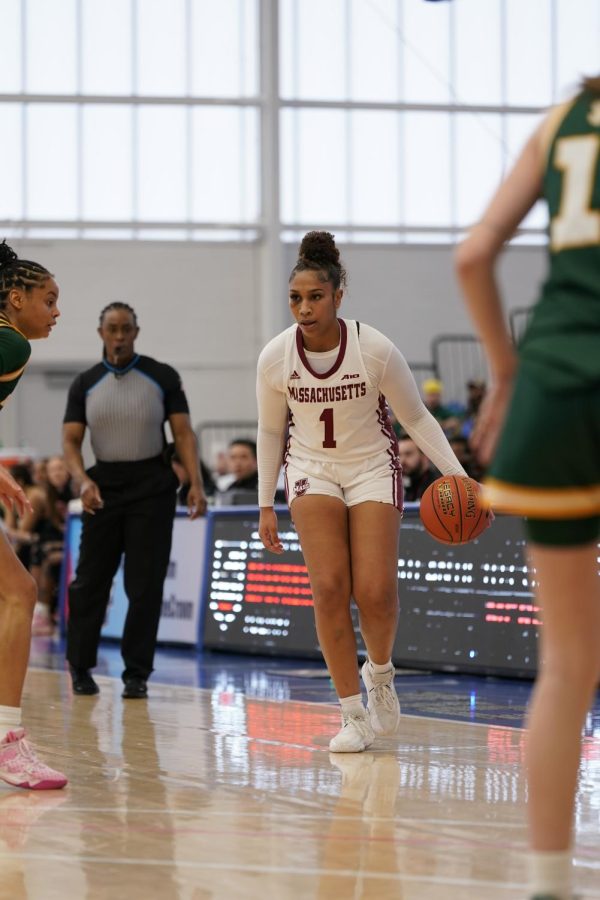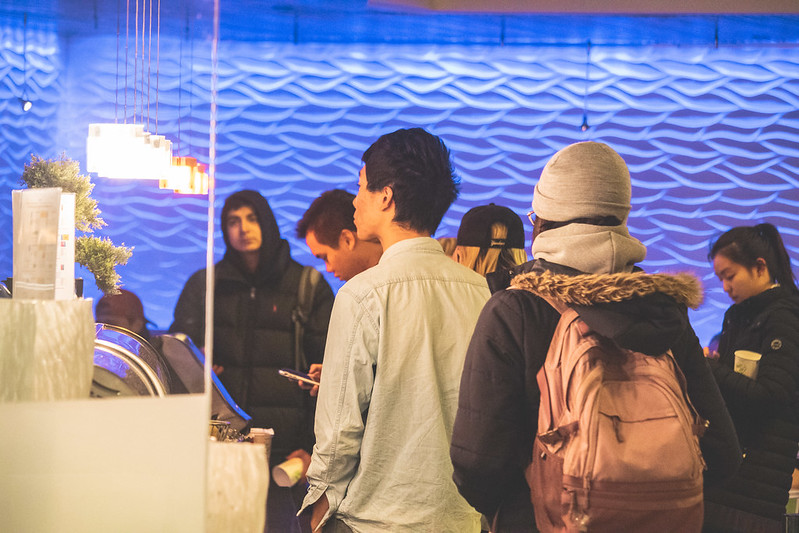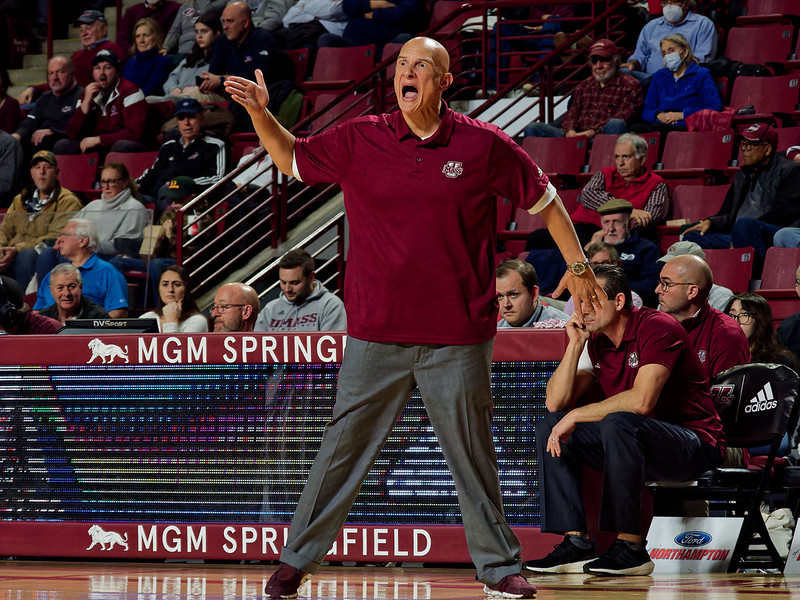Walking into the University Museum of Contemporary Art, you’re greeted with soft beige carpets, an open interior and a warm welcome by staff. If you’re lucky, maybe you’ll even catch a glimpse of Loretta Yarlow, the museum curator and director. When I met her, she was busy as can be attending to the needs of the unreleased works, which lay delicately across the ground of the place, each ready to be presented in its own meticulously planned spot in the museum. Upon meeting me, she immediately extended the offer of a tour, on which I was passionately given a behind the scenes look into how everything was being prepped for the big day.
With opening remarks from State Senator Jo Comerford, the reception took place in the lobby of the Bromery Center for the Arts, complete with a bar and appetizer table. The crowd of people all held the same respect for contemporary art, as well as the team that made it all possible. Paired with a symposium the very next day, the museum was filled with soft chatter and a warm aura of appreciation and community that’s difficult to find in big-city museums. That’s one of the reasons this place is so unique; its size and almost random location in the grand network of popular art museums around the country makes you wonder how we, of all colleges, can see in-person installations of unreleased work by well-known artists such as Andy Warhol.
Yarlow has been chief curator at the UMCA since 2005, with prior experience in museums around the country and the world.
“Of all the museums I worked at, I always felt that a museum that’s on a campus — where I can connect with students, faculty, the research that takes place and contemporary artists is always the dream,” Yarlow said.
Her words ring true, as the museum is at the center of our lives; hidden at the edge of the campus pond within the Bromery Center for the Arts, the UMCA is a gem of a showcase, and to think we as students have it so accessible to us is inspiring.
As a museum curator, Yarlow expresses herself through the arrangement and selection of her art on a grand scale, often having to manage limits she can’t control, like the size of the walls, the length of the paintings themselves and even the color of the building’s interior. In Yarlow’s world, everything artistic is also calculated.
“Thinking about what worked with what artists,” Yarlow explained.
“Thinking about the thematic and formal threads I could weave together in this exhibition. Thematic in terms of art and politics, and periods of time with minimal conceptual art. The formal is what young curators don’t often know how to do. Just thinking about where to position the art, what’s shown next to it, how much space is in between, how does one bring the visual memory from one place to another,” she continued.
As she continued to speak, it dawned on me just how much spatial awareness you need to have to populate a museum. It truly takes not only an artist’s eye, but an architectural one as well to coordinate aesthetics. I believe that there’s beauty in that aspect. The ability to make each piece of art shine on its own unique pedestal is one that takes deep research, talent and self-expression, which Yarlow overflows with.
Being curator means that Yarlow had full creative liberties with this exhibition. She really wanted to represent the campus and community in a way that was relevant to us and our current time, which is what the exhibition was meant to focus on.
“I wanted to unearth our presence here and to let it be known that we have this collection, and this collection is owned by you and me,” Yarlow said. “The goal is to get it out, and have it be seen and see what new things can be said about it.”
All the pieces in this collection feel like they have a purpose, although, what really stands out to me is the portion of the museum hidden away in a sunken room. The artists presented here are less mainstream, yet in my opinion, more impactful. In the small room advertised as, “We Gotta Get Out of This Place–Transportive art,” curated by UMass graduate students Cecily Hughes and Tirzah Frank, there’s art dedicated to the feelings of restlessness, fear and escapism many of us felt during the pandemic. Maybe it’s because this is the first massive historical event I’ve been alive to witness in full, but it really transported me back to those odd times. I can say for certain that the unique pieces here by Susan De Beer, Garry Winogrand and others truly match the description of transportive art that blends well with Yarlow’s chosen themes of politics, photography, pop conceptual and meditative topics throughout the exhibition. Some pieces even have QR codes coupled below them that bring you to extensive interviews with the artists themselves — a unique feature that makes the experience more interactive.
I almost felt silly asking Yarlow what her favorite piece in the museum was, as she works with the nearly 3,800 pieces in the UMCA collection on a day-to-day basis. However, with a laugh, she immediately took me to the multiples that lay folded open on display by Tauba Auerbach. Sticking out from the 2D art around it, Auerbach’s work has been featured at major exhibitions at the Musuem of Modern Art in New York, and now finally a small piece lay at the UMCA in its colorful glory. Next to it, a small screen shows a video installation of her art closing and opening just as a pop-up book would. It’s quirky and thought provoking, and makes you wonder just how many different ways you can present art.
Another piece that Yarlow often likes to show is one by Tim Rollins that takes up an entire wall. 24 pages from W.E.B DuBois’ novel, “Darkwater,” are displayed evenly across a large white wall. This piece is unique because it’s a collective piece, with each page having been dipped in black and gold ink individually by a student from the Renaissance School in Springfield. It’s supposed to represent a scene from the book itself: DuBois’ birth along a golden river in the Berkshire hills. This piece is especially interesting when put into context, as you can almost imagine the young students meticulously picking their favorite pages, and dousing them either carefully or not, to a degree they see fit. It’s playful, but also profound, just as childhood often is.
After my visit to the museum, as well as my talk with Yarlow, I started to ponder the importance of art collecting and what it means in society today. Art inspires people, which in turn makes them more productive and happier, which spills positively into their surrounding world. It’s a subtle domino effect.
“I want it to be known that it’s kind of like the food chain — everyone is fed,” Yarlow said. “For example, we purchase a work of art, the artist is compensated, we have it in our museum for future research and study. Everyone is nurtured, the students, the viewers and the galleries.”
I’m only scratching the surface on the importance of the art business, which Yarlow lectured on in her symposium, “The Future of Collecting: Why Collecting Matters.” The symposium will be available to watch on the UMCA website.
Nearing the end of my interview, we went off-script and talked more about broader topics, like the future of digital art, as well as unanswerable questions like, ‘What is art?’ I began to see just how easy it is for art and the act of talking about art to inspire thoughts, ideas and questions that you normally wouldn’t encounter daily. Even with my limited knowledge of contemporary art, I highly recommend any student go to the UMCA and experience something entirely different from what they’re used to.
Amelia Wompa can be reached at [email protected].


















